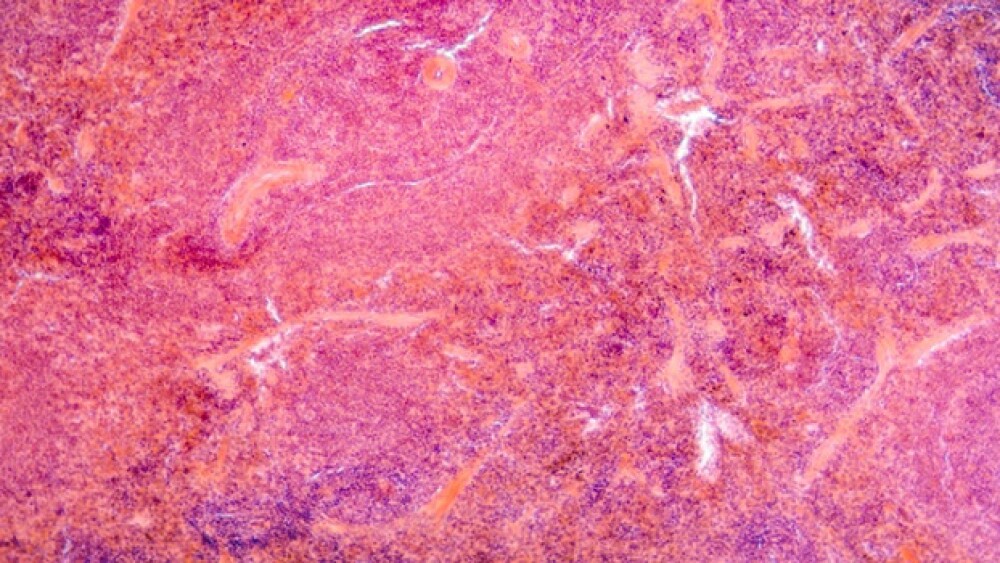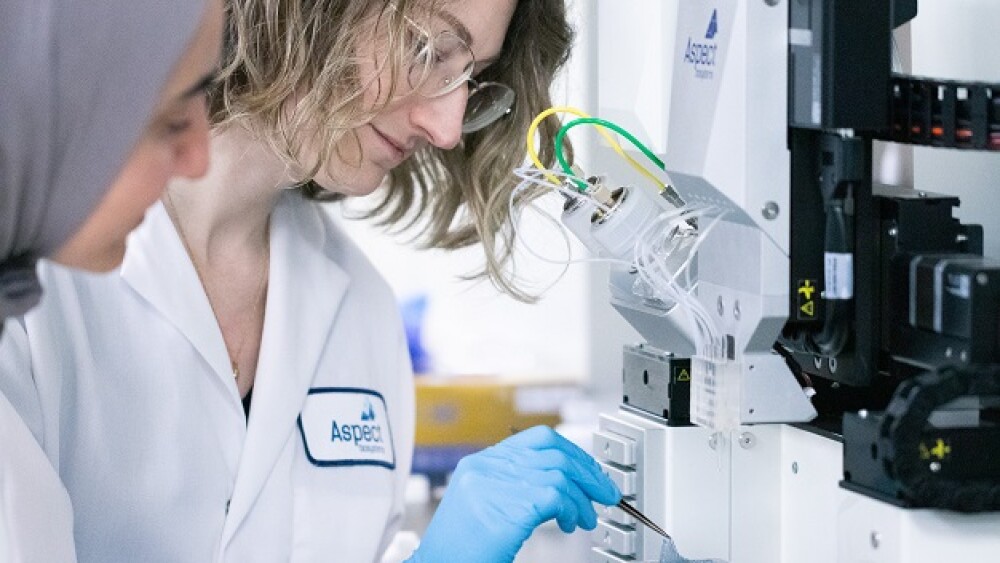The new partnership involves an initial payout of $75 million and the potential for up to $2.6 billion in milestone funding.
Pictured: Micrograph of pancreas tissue / iStock, defun
Aspect Biosystems and Novo Nordisk are leveraging their respective expertise in biotissue printing and stem cell biology to pursue novel therapeutics for type 1 diabetes and obesity, according to a statement released Wednesday.
In a deal worth up to $2.6 billion, the two companies aim to create three-dimensional, biologically functional tissues containing insulin-producing cells that can be surgically implanted without the need for immunosuppressive drugs.
“Clinical experience in this field over the last decade has demonstrated that while having the right cells is extremely important, the delivery technology and methods are just as critical,” Jacob Sten Petersen, Novo’s head of cell therapy research and development, told BioSpace in an email. “We believe Aspect’s technology will enhance our efforts and allow us to accelerate our development of a treatment.”
Experts in the space welcomed the news. “It’s always great to see major companies understanding the value of this kind of technology and seeing these investments,” Adam Feinberg, a biomedical engineer at Carnegie Mellon University in Pittsburgh and CTO and cofounder of the bioprinting company FluidForm, told BioSpace. But he and others cautioned that there’s a long way to go before any fruits of the collaboration reach the clinic.
Type 1 diabetes is a genetic condition in which the body’s immune system attacks and destroys pancreatic insulin-producing beta islet cells. The disease disproportionately affects children and adolescents, and 64,000 people are diagnosed in the U.S. each year. Obesity is typically associated with the later-onset type 2 diabetes, which involves other mechanisms that prevent the body from making enough insulin or using it well, but increasingly, scientists are noting links between obesity and the early-onset form. A recent study in the U.S. showed that 62 percent of adults with type 1 diabetes are affected by overweight or obesity.
Tamer Mohamed, CEO and cofounder of Aspect Biosystems, told BioSpace the collaboration was borne out of “an immediate need” for a cure, adding that “there are millions of patients around the world that have lost the ability to control blood glucose by themselves.” The partnership with Novo, a company that has been focusing on diabetes therapeutics for decades, will aim to first develop a treatment, but ultimately a cure, he said.
“Once we are hopefully successful in doing that, we can move forward to other areas,” Mohamed added, including type 2 diabetes and liver disease.
Chances of Success
In exchange for an exclusive, worldwide license to use Aspect Biosystem’s bioprinting technology, Novo will fund an initial payment of $75 million USD to Aspect—including an upfront payment, research funding and an investment in the form of a convertible note—to develop up to four products for the treatment of diabetes and/or obesity. Aspect is also eligible to receive up to $650 million dollars per project based on future development, regulatory, commercial and sales milestones, as well as tiered royalties on product sales, for a total deal evaluation of more than $2.6 billion USD.
The companies’ bioengineered tissues approach will face a host of challenges, including overcoming the body’s natural inclination to destroy the very cells being introduced into patients, said Ibrahim Ozbolat, a biomedical engineer at Penn State University who is developing roughly a dozen different biotissues.
Pictured: Aspect Biosystems is pursuing advances in bioprinting, including the ability to create three-dimensional, biologically functional tissues. / Courtesy of Aspect Biosystems
There are two ways to get around this, he noted: you can shield beta cells by encapsulating them in a protective sheath or you can continuously supplement a patient with new cells.
Aspect’s technology produces a three-dimensional tissue composed of various “bioinks” that contain different cell types, and Ozbolat expects these will include an immune-cloaking layer. One limitation is that scar tissue can form around the implant, “and then the diffusion of insulin gets tougher, and eventually, the cells in the device die,” Ozbolat said. “I don’t know how they will tackle that problem, but between them, there’s a lot of expertise.”
Novo’s cell manufacturing process for this collaboration relies on allogeneic cells derived from a living or cadaver donor, rather than extracting cells from each individual patient. Allogeneic cells are easier to mass produce, but they also have limitations, Ozbolat said. The first biotissue transplant, which occurred June 2022, used a woman’s own cells to produce a new ear.
Because neither company has produced much in the way of peer-reviewed studies, it’s difficult to judge how successful the partnership is likely to be, Feinberg said. An abstract shared at last year’s American Diabetes Association conference showed that diabetic rats that received a 3D tissue filled with allogeneic islet cells were able to maintain normal glucose levels for more than a month.
The scale of the challenge is massive, however, and Feinberg noted that companies have been pursuing treatments for diabetes since scientists first learned about the disease. “But hopefully this translates into commercial products that are benefiting patients,” he said. “That’s really the prize right there.”
Amanda Heidt is a freelance science writer and editor based in Moab, Utah. To learn more, follow her on Twitter (@Scatter_Cushion) or visit www.amandaheidt.com.






